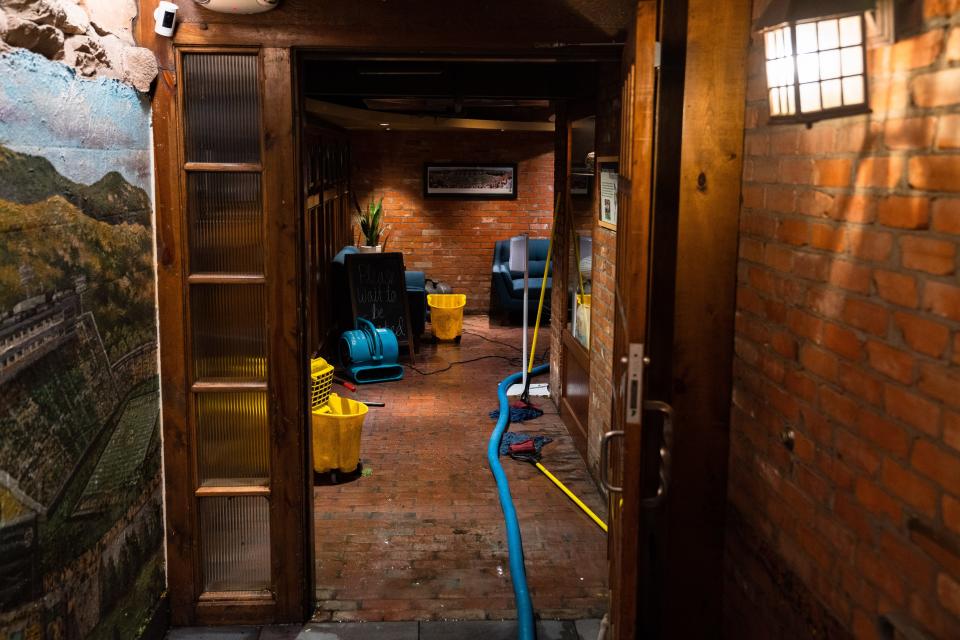Colorado monsoon: How much does it really contribute to our flash floods?
Colorado's deadliest natural disaster, the Big Thompson Flood, and one of Fort Collins' worst natural disasters, the Spring Creek Flood, occurred during the state's so-called monsoon season.
As did Monday's deluge, which occurred on the anniversary of the 1976 Big Thompson Flood and dropped as much as 3.83 inches of rain, flooding parts of the city. The city averages 1.63 inches of rain in all of July.
But were these large rainfall-driven floods caused by what is referred to as the North American Monsoon?
Like most weather events, it's complicated.
What is the North American Monsoon?
It brings a large fraction of the annual precipitation, as moisture streams in from the Pacific, Gulf of California and Gulf of Mexico, according to Russ Schumacher, state climatologist and professor in CSU's Department of Atmospheric Science.
"This is associated with upper-level high pressure over the southern U.S., and we (northern Front Range of Colorado) tend to be on the northern fringe of that high-pressure system in late July and early August, which is a favorable spot for storms to form.''
Does Colorado's northern Front Range actually experience a monsoon?
The increase in storms in late July and early August often gets referred to as the "monsoon season,'' but it’s only sort of connected to the monsoon that impacts northern Mexico, Arizona, New Mexico and parts of western Colorado, Schumacher said.
He said influences of the North American Monsoon on precipitation in Northern Colorado are mostly indirect, but Fort Collins does see a clear uptick in precipitation in late July and early August.
"The moisture that fuels our big storms here on the Front Range generally isn’t coming all the way from the southwestern U.S. and over the mountains, which would be the direct connection to the monsoon,'' he said. "Instead, these storms move in from the east with upslope winds.''

Were the Big Thompson Flood and Spring Creek Flood in Fort Collins caused by the so-called monsoon?
It's complicated.
Schumacher pointed out the last week of July and first week of August is when some of the worst weather disasters have occurred in our area, but those events were not directly the result of the so-called monsoon:
July 31, 1976: Big Thompson Flood
July 27-28 1997: Spring Creek Flood
July 31, 1979: Killer hailstorm
July 20, 2021: Black Hollow flash flood that killed four people
July 15, 2022: Buckhorn Canyon flash flood that killed two people
"Yes, these storms are part of the 'monsoon season' when we generally have increased rainfall, but the connection to what meteorologists think of as the monsoon is not as direct,'' he said. "The big rainstorm on the night of July 31 (Monday) in Fort Collins very much fits in to that climatological history.''
Was the unusually rainy weather in Fort Collins in June and early July related to the so-called monsoon?
No.
The so-called monsoon season in the northern Front Range typically runs late July into August.
Dave Barjenburch, National Weather Service meteorologist in Boulder, previously told the Coloradoan our abundant late spring and early summer moisture was related to locations of high- and low-pressure ridges.
Typically, he said, Colorado weather that time of year is dominated by a high-pressure ridge in the Southwest, which produces warmer and drier conditions for Colorado. This spring and early summer, a deep low-pressure ridge in the western U.S., combined with the high pressure in the upper Midwest, funneled a consistent plume of Gulf of Mexico moisture into Colorado.
This article originally appeared on Fort Collins Coloradoan: Colorado monsoon: The truth about how it plays into our flooding

